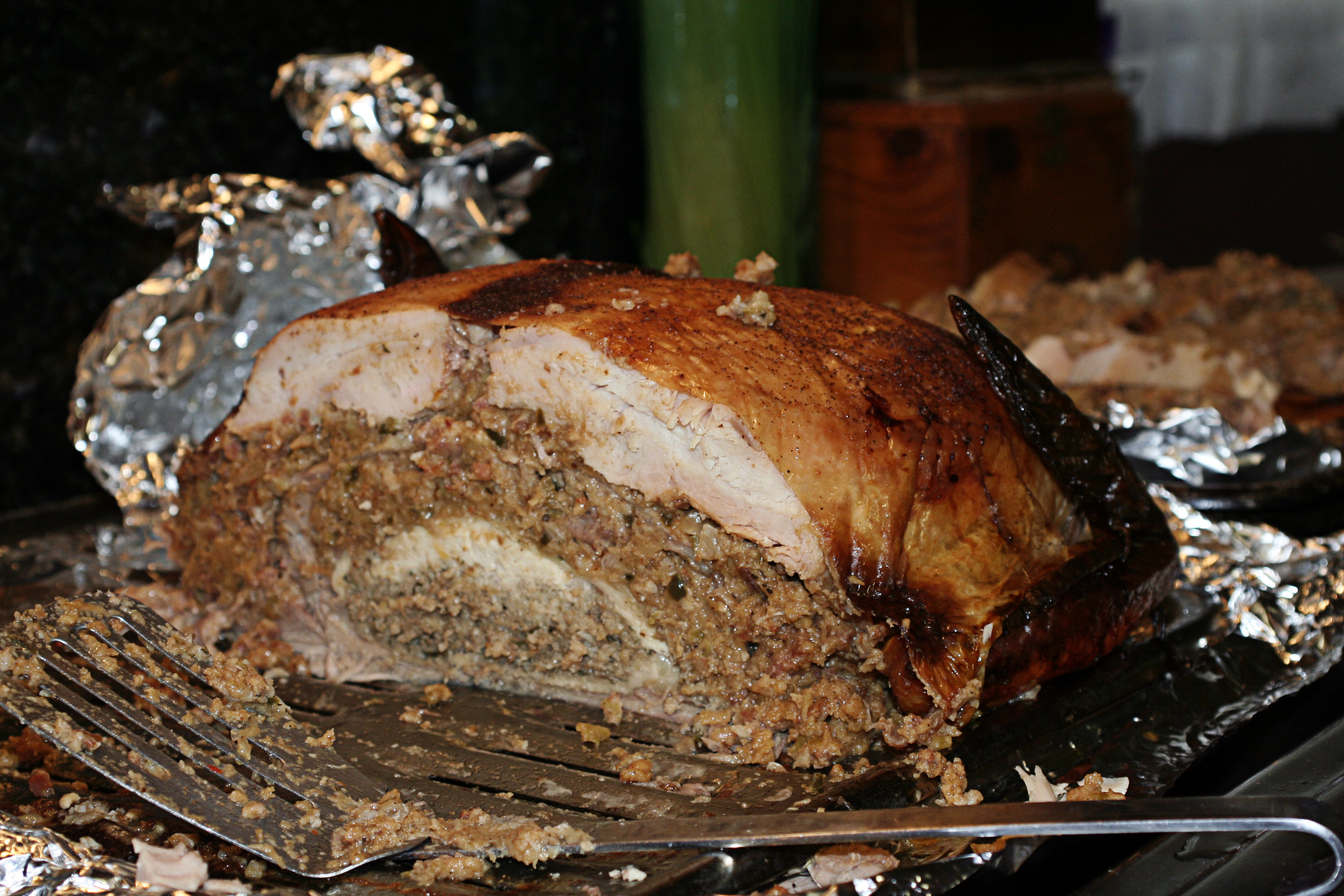Making a turducken is a labor-intensive, and—many would say—an advanced culinary technique.
So for those who want to satisfy their idle curiosity, here’s how a turducken is put together. For intrepid culinary explorers, a DIY turducken is an epicurean adventure and challenge on the scale of making Peking duck in a home kitchen.

Origins
Turducken can link its heritage to the French creation called a ballotine, which is deboned poultry stuffed with forcemeat. Extravagant variations range up to 17 different types of birds stuffed into each other.
The modern-day invention of turducken has several different possible paths to authenticity. Among the claimants is the iconic New Orleans chef, Paul Prudhomme, who is best known for adapting his fiery searing technique to make his trend-setting, signature dish: Blackened Redfish.
This 2002 New York Times article by Amanda Hesser is one of the definitive pieces of turducken literature. The story chronicles turducken history and Ms. Hesser’s personal quest to make turducken on her own— with a key assist from none other than Stanley Lobel.
At Home
In your home kitchen, you have three options for preparing turducken, ranging from complex to simple:
- From scratch: Buy the fresh turkey, duck, and chicken; debone them, and make up to 3 different stuffings, each paired to one of the types of poultry, or use one stuffing for all of the parts.
- With assistance: Enlist the help of your local butcher or meat-counter person to debone each of the birds so all you have to do is stuff, truss, and roast.
- Pre-fab: Buy a ready-made turducken that simply needs to be roasted and served.
DIY Turducken
If you choose the “from scratch” method, here is how you go about it.
The deboning process for each type of bird is generally the same. The major difference is that all of the bones are removed from each bird, except the drumstick bones of the turkey. These are used to truss the roast and to give the turducken the natural appearance of a turkey.
- Turn the bird breast side down and make a single cut along the backbone. Then with the edge of the boning knife parallel to the carcass work the blade down along the contour of the bone structure, peel the skin and flesh back as you work your way down. Remove the skeletal frame and turn the bird skin-side down.
- To remove the thigh bone and drumstick, make a single cut on top of each bone. Cut through the joint to separate the thigh bone from the drumstick. Slip the tip of your knife down one side of the bone and then the other and then under the bone to completely separate the flesh from the bone. Remove the bone.
- Remember to remove the turkey’s thigh bone, but leave the drumstick intact.
- When all three birds are deboned, lay the turkey skin-side down on a flat surface. Spread a layer of stuffing on the turkey.
- Lay the duck skin-side down on top of the stuffing and turkey, and spread with a layer of stuffing.
- Lay the chicken skin-side down on top of the stuffing and duck, and spread with a layer of dressing.
- Pull the sides of the chicken together and secure with poultry pins or a long skewer.
- Repeat with the duck, wrapping it around the chicken.
- Repeat with the turkey, wrapping it around the duck.
- Tie the ends of the turkey drumsticks together to secure the entire roast. Optionally, you may want to tie the roast a couple of times to secure its shape while cooking.
- Place the turducken, breast-side up, in a roasting pan fitted with a roasting rack.
- Place in a preheated 375°F oven and roast for 20 minutes per pound. Tent the turducken with foil while it roasts. Remove the foil 1 hour before the end of the roasting time to all the skin to brown and crisp.
- After removing from the heat, allow the turducken to rest 45 to 60 minutes, depending on its size.
- For serving, slice the turducken across the roast from front to back so that each slice contains a portion of turkey, duck, chicken, and the stuffings.
Once you’ve experienced success making turducken, you can proudly add another notch on your culinary belt.
Have you ever eaten turducken? Would you consider making turducken yourself from scratch?



Leave Your Response